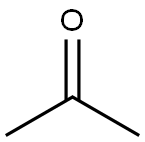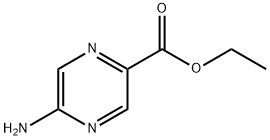I rushed while gluing two PVC pipes together and realized they’re both the wrong length. The cement has dried, but I need to separate them. Is there a way to soften or dissolve the glue without ruining the pipes? I can’t just cut them and start over—it’s a tight space!
Can I Dissolve PVC Cement to Separate Two Glued Pipes?
Related Encyclopedia
Related Products More >
-
- 96-26-4
- CNY Request For Quotation
-
- 96-26-4
- CNY Request For Quotation
-
- CNY Request For Quotation
-
- CNY Request For Quotation
-
- 67-64-1
- CNY 2000.0000
- 1ton
-
- 51364-51-3
- Request For Quotation
- 100g
-
- 51364-51-3
- Request For Quotation
- 10g
-
- 51364-51-3
- Request For Quotation
- 1kg




 沪ICP备2021018848号-5
沪ICP备2021018848号-5

If the pipes are in a tight space, work methodically and protect surrounding materials from solvent exposure. Once separated, clean the fittings thoroughly to remove residual glue before reusing them. Note that acetone can degrade PVC over time, so inspect the pipes for signs of weakening. If the pipes are too damaged, replacing them might be necessary. Always prioritize safety by wearing gloves and working in a well-ventilated area when using solvents.
Afterward, use pliers or a pipe wrench to gently twist and separate the pipes. Work slowly to avoid cracking the PVC, especially in tight spaces where leverage is limited. If the pipes resist separation, apply more acetone and repeat the process. Once apart, clean the fittings with a cloth or scraper to remove residual glue. Sand lightly if needed to restore a smooth surface for future connections.
Be mindful that acetone can degrade PVC, potentially weakening the pipes. Inspect them carefully for cracks, warping, or brittleness before reuse. If the pipes show signs of damage, replace them to avoid leaks or failures. Additionally, take precautions when handling acetone: wear gloves, ensure proper ventilation, and avoid contact with skin or eyes.
For tight spaces, consider cutting the pipes as a last resort. While this may seem counterproductive, it allows you to cleanly reassemble the system with new fittings. If you’re unsure about using solvents or lack the tools for safe separation, consult a professional plumber. By balancing persistence with caution, you can salvage your pipes without starting entirely from scratch.
Start by gathering supplies: acetone (nail polish remover containing 100% acetone works), protective gloves, a small brush or cotton swabs, pliers, and sandpaper. Begin by applying acetone directly to the glued joint. Use a brush or cotton swab to ensure even coverage, focusing on areas where the pipes meet. Let the acetone sit for 10–15 minutes to penetrate and soften the cement. Avoid rushing this step, as insufficient soaking will make separation harder.
After the acetone has had time to work, use pliers or a pipe wrench to gently twist and pull the pipes apart. Apply steady pressure to avoid cracking the PVC, especially in tight spaces where movement is restricted. If the pipes don’t budge, reapply acetone and let it sit longer. Repeated applications may be necessary for stubborn joints.
Once separated, clean both pieces thoroughly to remove any remaining glue. Use a scraper or cloth to wipe away softened cement, then lightly sand the surfaces to restore a smooth finish. Inspect the pipes for signs of damage, such as cracks, warping, or brittleness. Acetone can degrade PVC over time, so compromised pipes should be replaced to prevent future leaks or failures.
Safety is paramount when using acetone. Wear gloves to protect your skin, work in a well-ventilated area, and avoid open flames or sparks, as acetone is highly flammable. Additionally, shield surrounding materials from accidental spills, as acetone can damage paints, plastics, and other surfaces.
If the pipes remain inseparable despite your efforts, cutting them might be the only option. While this seems drastic, it allows you to install new fittings and rebuild the system correctly. For complex situations or tight spaces, consulting a professional plumber ensures the job is done safely and effectively.
By combining careful solvent application with mechanical effort, you can often salvage glued PVC pipes without starting over. However, always weigh the risks of potential damage against the cost of replacement parts. With the right approach, you can address mistakes and complete your project successfully.